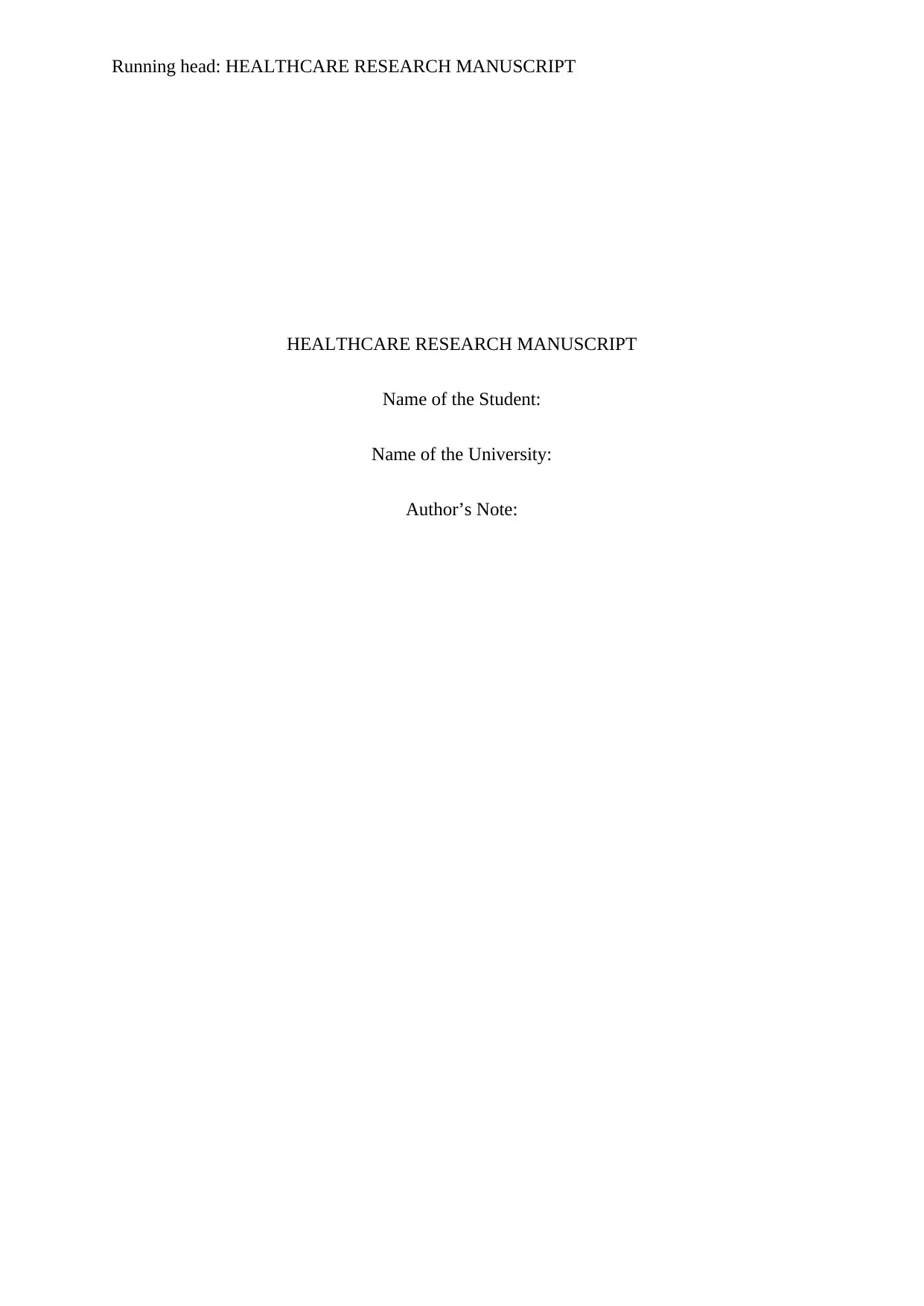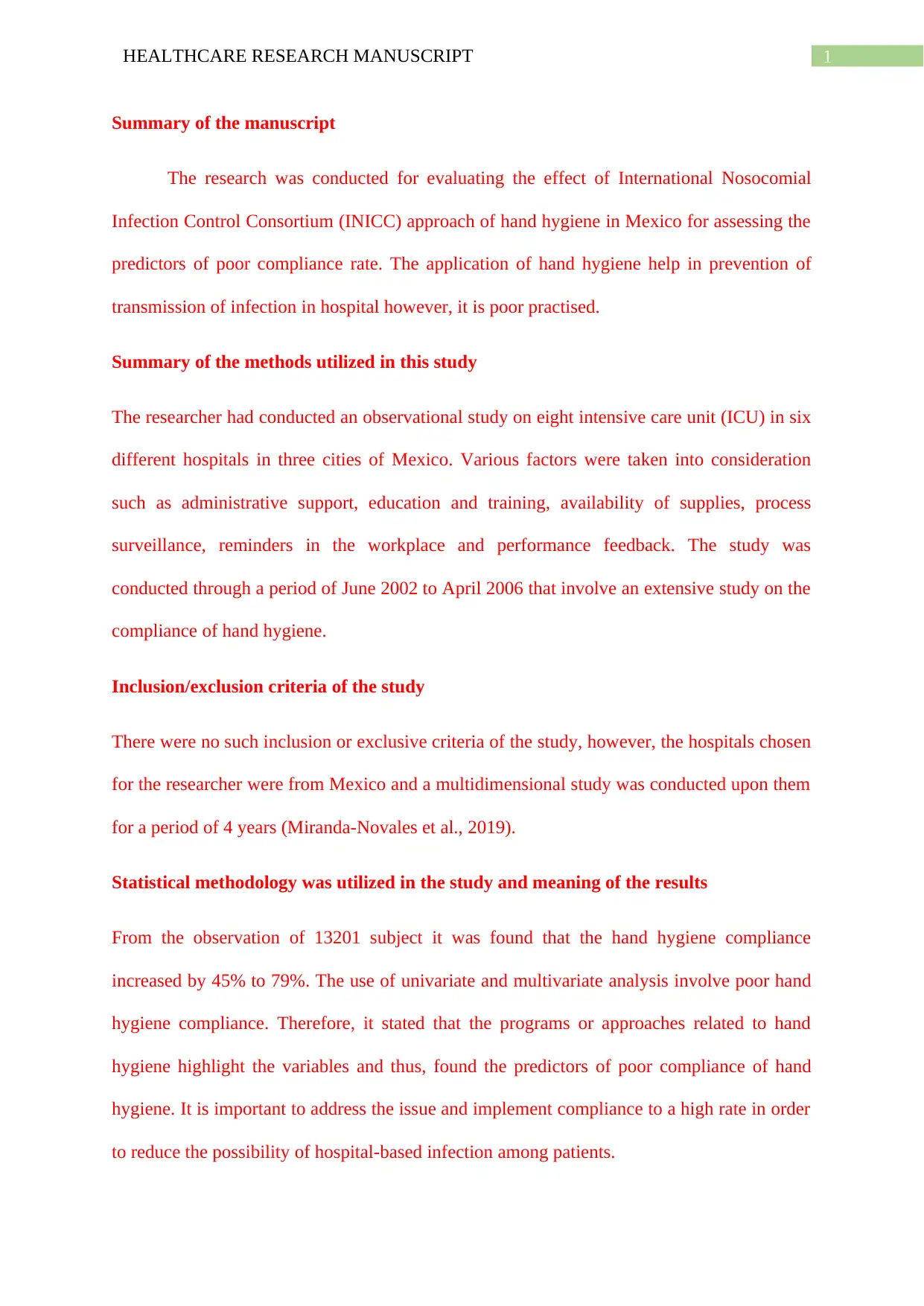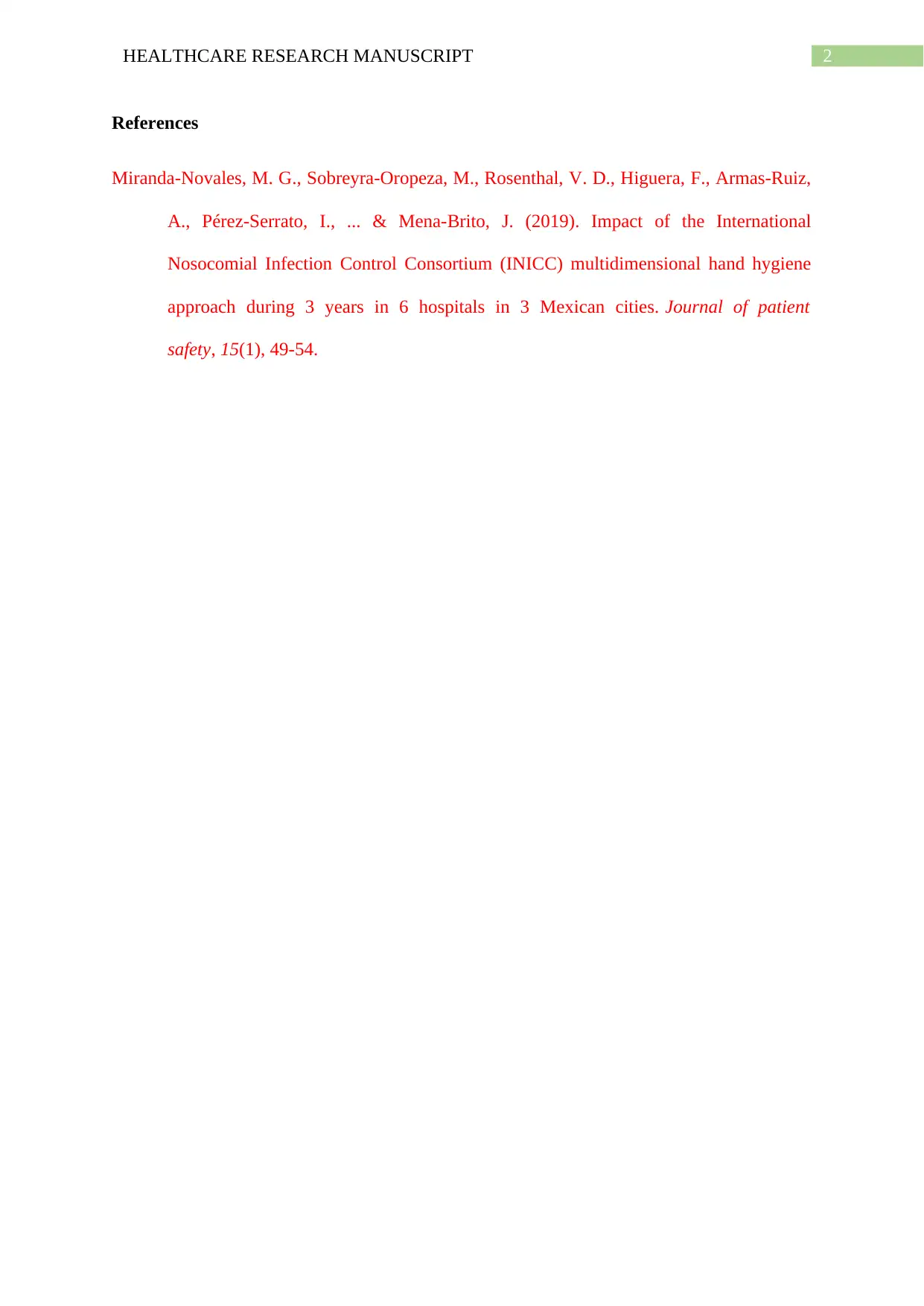Healthcare Research: Hand Hygiene in Mexico - Study Report
VerifiedAdded on 2022/08/20
|3
|404
|74
Report
AI Summary
This report presents a healthcare research study conducted in Mexico to evaluate the effectiveness of the International Nosocomial Infection Control Consortium (INICC) approach to hand hygiene. The study, spanning from June 2002 to April 2006, involved intensive care units (ICUs) in six hospitals across three cities. The research aimed to assess the predictors of poor hand hygiene compliance. The methods included observational studies, considering factors such as administrative support, education, and process surveillance. The findings revealed an increase in hand hygiene compliance from 45% to 79%. The study utilized univariate and multivariate analysis to identify factors associated with poor compliance. The research highlights the importance of implementing hand hygiene programs to reduce hospital-based infections. The study's results emphasize the need for proactive measures to improve compliance rates and, consequently, patient safety.
1 out of 3









![[object Object]](/_next/static/media/star-bottom.7253800d.svg)